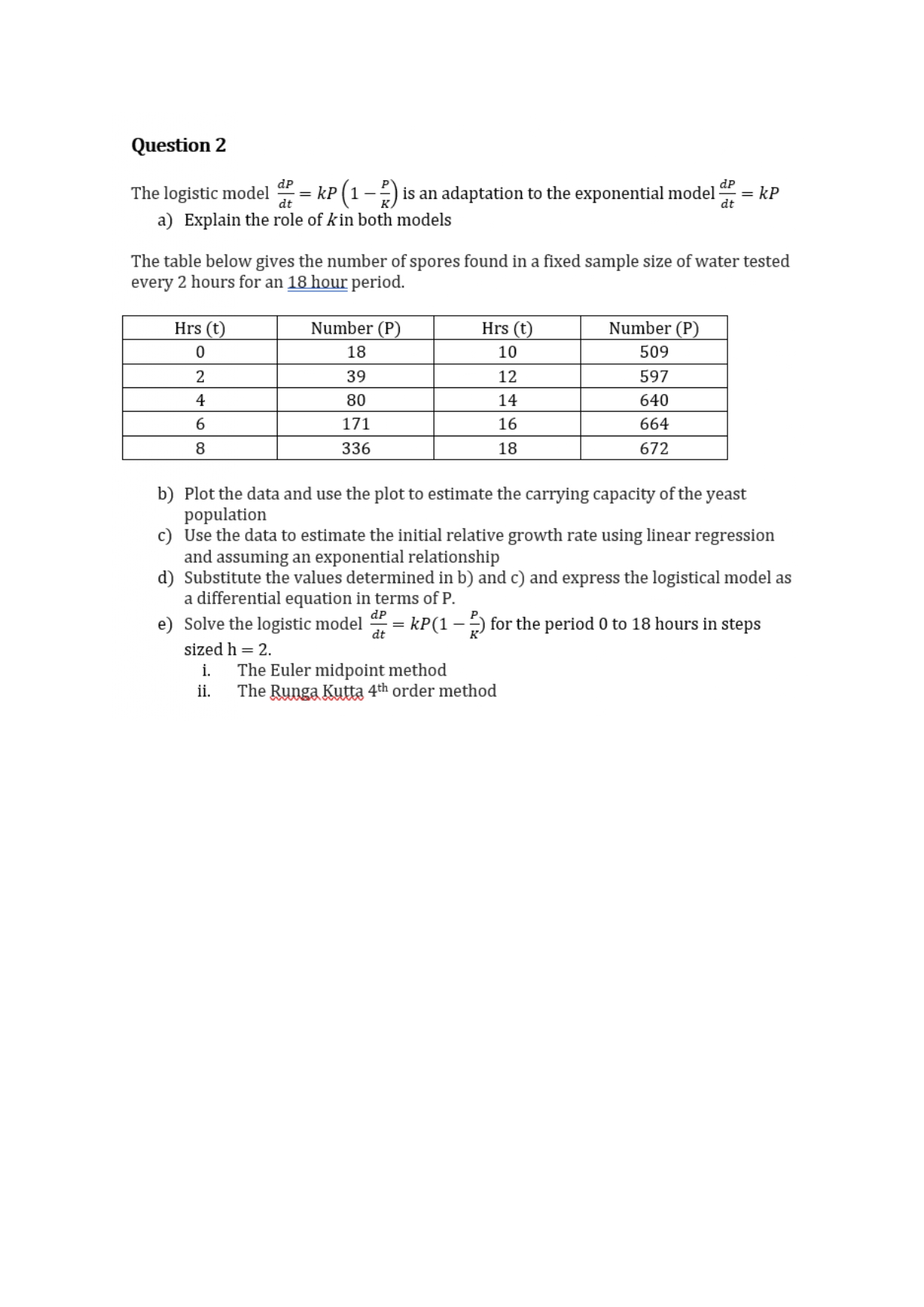Home /
Expert Answers /
Other Math /
the-logistic-model-dtdp-kp-1kp-is-an-adaptation-to-the-exponential-model-dtdp-kp-a-ex-pa201
(Solved): The logistic model dtdP=kP(1KP) is an adaptation to the exponential model dtdP=kP a) Ex ...

The logistic model is an adaptation to the exponential model a) Explain the role of in both models The table below gives the number of spores found in a fixed sample size of water tested every 2 hours for an 18 hour period. b) Plot the data and use the plot to estimate the carrying capacity of the yeast population c) Use the data to estimate the initial relative growth rate using linear regression and assuming an exponential relationship d) Substitute the values determined in b) and c) and express the logistical model as a differential equation in terms of . e) Solve the logistic model for the period 0 to 18 hours in steps sized i. The Euler midpoint method ii. The Runga Kutta order method
Expert Answer
a) In both the exponential model and the logistic model, the parameter k represents the growth rate of the population. However, in the logistic model, k is modified by the term (1 - P/K), where P represents the population size at a given time and K represents the carrying capacity of the environment. In the exponential model,the growth rate is directly proportional to the population size at any given time. The population size increases exponentially over time without any limiting factors. In the logistic model, the growth rate is still proportional to the population size, but it is adjusted by the term (1 – P/K). This term represents the effect of the carrying capacity (K) on the growth rate. As the population size approaches the carrying capacity, the term (1 – P/K) decreases, which slows down the growth rate. At the carrying capacity, the term becomes zero, and the population size remains stable. Therefore, in the logistic model, the parameter k controls the overall growth rate, while the term (1 – P/K) introduces the concept of limiting factors and regulates the growth rate based on the population size relative to the carrying capacity.